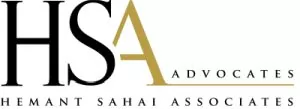In light of resurgence of Covid-19 pandemic in India, Reserve Bank of India (RBI), vide notifications dated May 5, 2021, has announced certain measures - Resolution Framework 2 and Resolution for MSMEs – to alleviate uncertainties and stress on individual borrowers and small businesses and Micro, Small and Medium Enterprises (MSMEs), many of whom are finding it difficult to repay loans on time.
Resolution Framework 2 – For individuals and small businesses
RBI's EMI moratorium on loan payments ended its six-month run-on August 31, 2020 and, thereafter, RBI had given the option to borrowers to approach the bank for further restructuring based on the Restructuring Circular issued in August 2020 (Resolution Framework 1). While RBI has not announced a blanket moratorium now, the measures taken vide Resolution Framework 2 pertain to resolution of advances to individuals and small businesses and resolution of working capital support, irrespective of whether they availed the restructuring support earlier. Key aspects of this Framework are as follows:
- Resolution of advances to individuals and small businesses
-
- Eligibility: Lending institutions can permit individual borrowers and small businesses to implement resolution plans in respect of their credit exposures. Those who had not availed the Resolution Framework 1 can now avail of the Resolution Framework 2 if the loan amount is up to INR 25 Crore as on March 31, 2021.
- Scope: The resolution plans implemented under the Resolution Framework 2 may inter alia include rescheduling of payments, conversion of any interest accrued or to be accrued into another credit facility, revisions in working capital sanctions, granting of moratorium based on an assessment of income streams. However, compromise settlements are not permitted.
- Classification of loans: The loans are required to be classified as 'Standard' loans as on March 31, 2021. This asset classification may be retained as such upon implementation, whereas borrowers' accounts which may have slipped into NPA between invocation and implementation may be upgraded as 'Standard', as on the date of implementation of the resolution plan. Any subsequent asset classification for such exposures will be governed by the criteria laid out in the 'Master Circular - Prudential norms on Income Recognition, Asset Classification and Provisioning pertaining to Advances' dated July 1, 2015 or other relevant instructions as applicable to any specific category of lending institutions. All banks and lending institutions will have to revoke the scheme anytime up to September 30, 2021.
- Need for Board approval: Lending institutions need to frame Board-approved policies within four weeks from the date of Resolution Framework 2. However, such institutions must ensure that the resolution is provided only to borrowers having stress on account of Covid-19. Such policy shall detail the eligibility of borrowers, the diligence considerations to be followed by lending institutions and also provide a system for redressing the grievance of borrowers who request for resolution under the Resolution Framework 2.
- Process timelines: The assessment of eligibility for resolution as per the instructions contained in the Resolution Framework 2 and the Board approved policy put in place shall be completed, and the decision on the application shall be communicated in writing to the applicant by the lending institutions within 30 days of receipt of such applications. Any decision taken by a lending institution needs to be taken independently of decision of other financial institutions. Further, the resolution plan should be finalized and implemented within 90 days from the date of invocation of the resolution process under this framework. The resolution plan shall be deemed to be implemented only if all the conditions in Paragraph 10 of the Annex to the Resolution Framework 1 are met.
- Duration: The moratorium under Resolution Framework 2, if granted, can be for a period of 2 years and come into force immediately upon implementation of the resolution plan. Any extension of residual tenor of the loan facilities which are granted to the borrower (inclusive of moratorium, if permitted) shall be for a period of 2 years.
- Approval for additional finance: In case a resolution process has been invoked, then the lending institutions are permitted to sanction additional finance even before implementation of the resolution plan in order to meet the interim liquidity requirements of the borrower. This facility of additional finance may be classified as 'Standard' till implementation of the plan, regardless of the actual performance of the borrower in the interim. However, if the resolution plan is not implemented within the stipulated timelines, the asset classification of the additional finance will be as per the actual performance of the borrower with respect to such additional finance or performance of the rest of the credit facilities, whichever is worse.
- Working capital support for small businesses with prior resolution plan implementation
-
- Individuals availing loans for business purposes and small businesses, including those engaged in retail and wholesale trade (other than MSME) whose resolution plans had been implemented in terms of the Resolution Framework 1, lending institutions are permitted, as a one-time measure, to review the working capital sanctioned limits and/or drawing power based on a reassessment of the working capital cycle, reduction of margins, etc. without the same being treated as restructuring.
- The decision in respect to the same shall be taken by lending institutions by September 30, 2021, with the margins and working capital limits being restored to the levels as per the resolution plan implemented under Resolution Framework 1, by March 31, 2022.
- Disclosures and credit reporting
-
- A lending institution publishing quarterly financial statements shall make disclosures in their financial statements for the quarters ending September 30 and December 31, 2021. The resolution plans implemented in terms of Part A of this framework should also be included in the continuous disclosures required as per Resolution Framework 1.
- The number of borrower accounts where modifications were sanctioned and implemented and the aggregate exposure of the lending institution to such borrowers may also be disclosed on a quarterly basis, starting from the quarter ending June 30, 2021.
- Lending institutions that are required to publish only annual financial statements shall also make the required disclosures in their annual financial statements.
- Credit reporting by financial institutions where borrower accounts have been restructured under this framework shall reflect the 'restructured due to Covid-19' status of the account.
Resolution for MSMEs
The following set of measures specifically targeting MSMEs:
- No restructuring availed under Resolution Framework 1 and classified as 'Standard' as on March 31, 2021: MSMEs having aggregate exposure (including non-fund-based facilities) of up to INR 25 Crore, shall be eligible to be considered under the Resolution for MSMEs. Such proposed restructuring framework may be invoked up to September 30, 2021 and shall have to be implemented within 90 days after invocation.
- Restructuring availed earlier: Lending institutions are also being permitted, as a one-time measure, to review the working capital sanctioned limits, based on a reassessment of the working capital cycle, margins, etc. without the same being considered as restructuring. Any decision with regard to above shall be taken by lending institutions by September 30, 2021. The reassessed sanctioned limit or drawing power shall be subject to review by the lending institution at least on a half yearly basis and the renewal/reassessment at least on an annual basis.
- Asset classification: The asset classification of borrowers classified as 'Standard' may be retained as such, whereas the accounts which may have slipped into NPA category between April 1, 2021 and date of implementation may be upgraded as 'Standard' as on the date of implementation of the restructuring plan. It should, however, be noted that the relaxations provided under the Resolution for MSMEs shall be contingent on the lending institutions satisfying themselves that the same is necessitated on account of the economic fallout from Covid-19 and subsequent supervisory review with regard to their justifiability on account of the economic fallout from Covid-19.
Our viewpoint
Amid the unprecedented Covid surge gripping the nation, the slew of measures announced by RBI relating to resolution of Covid related stressed assets of individuals, small businesses and MSMEs provide much needed relief to the most vulnerable category of borrowers in this environment.
RBI has taken the financial sector battle against Covid 2.0 head on with clear focus on protecting lives and livelihoods. The efforts taken by the central bank will clearly strengthen the Indian economy and will provide an impetus to individuals and MSMEs to scale up their business without worrying about financial destitution. The extension window for the earlier availed borrower would ease liquidity challenges and facilitate meeting the objective of inclusive growth.
The content of this article is intended to provide a general guide to the subject matter. Specialist advice should be sought about your specific circumstances.



